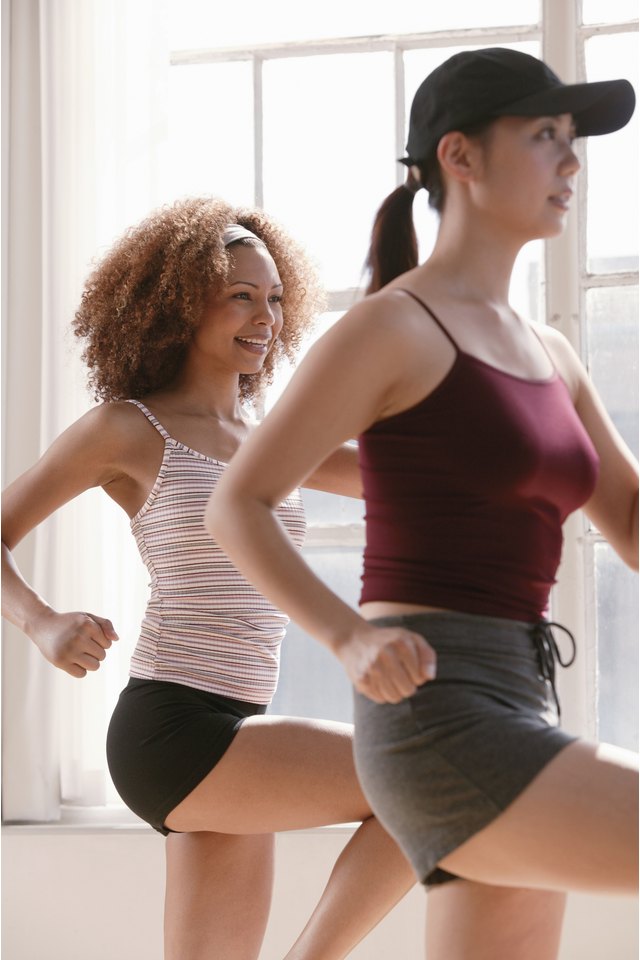The Meaning of Aerobic Dance

Aerobic exercise causes you to repeatedly move the largest muscles in your legs, hips and arms. Your heart and respirate rates increase and your body benefits in many ways -- you burn calories, lower your risk of heart disease, and boost your mood, immunity and stamina. The Centers for Disease Control and Prevention recommend 150 minutes per week of moderate-intensity aerobic exercise.
Aerobic dance is a choreographed, repetitive movement routine set to music. A typical aerobics program begins with 5 to 10 minutes of warm-ups and stretching, peaks with 20 to 30 minutes of target heart range dance, can include 20 minutes of a muscle stretching floor program known as body sculpting, and ends with 5 to 10 minutes of cool down and more stretching, according to the American Academy of Podiatric Sports Medicine.
History
Dr. Kenneth Cooper, now an expert in the study of cardiovascular health and longevity, coined the term "aerobics" and kick-started a movement when he published a best-selling book by the same name in 1968. Jazzercise -- the trademarked name of a fitness program that combines dance with movement set to music -- was founded one year later by Judi Sheppard Missett in Evanston, Illinois. The aerobic dance trend grew and evolved.
Low- and High-Impact Aerobics
Low-impact aerobic dance is typically about one hour's worth of movements where participants keep one foot on the floor at all times. This variety of aerobic dance is easier on the knees. According to the Department of Kinesiology and Health at Georgia State University, this form of aerobics is more appropriate for pregnant and overweight people than high-impact aerobics. High-impact aerobics includes movements such as hopping and jumping that mobilize both feet off the ground at the same time, which is more strenuous than low-impact routines.
Variations
Step aerobics participants use a small platform during their workout. Stepping on and off the platform -- which can sometimes be raised or lowered depending on workout intensity level -- adds variety and a greater cardiovascular challenge. Water aerobics are done in a swimming pool and further reduce strain on the lower back and joints. Jazzercise is still offered in fitness centers nationwide. Routines combine cardio, strength and stretch moves as well as movements from hip-hop, yoga, Pilates, jazz dance, kickboxing and resistance training.
Aerobics Attire and Gear
Athletic shoes that provide ample cushion while also offering stability are important for aerobic dancers. It's important to wear shoes that don't have a heel since rolling the ankle is a risk if you're doing aerobics in the wrong shoes. Wear loose and stretchy clothing that won't bunch up or expose you if you raise your arms or bend forward. Cotton T-shirts are OK, but fitness clothing made of fabric that wicks moisture away from the skin will be less clingy and less likely to cause chafing.
References
Writer Bio
Aline Lindemann is a health, food and travel writer. She has also worked as a social worker, preschool teacher and art educator. Lindemann holds a Master of Liberal Studies in culture, health and creative nonfiction writing from Arizona State University.
